It couldn't be more different than its predecessor. Like it or not, the design of the new Hyundai Tucson not only does it cut completely with the past, it transforms the successful SUV into one of the most distinguished in the segment — many heads turned at the passage of the new SUV, especially when they came across the original luminous signature on the front.
The new SUV stands out for its visual expressiveness and boldness, and for the dynamism of its lines, but it wouldn't go as far as Hyundai in calling this new style “Sensuous Sportiness” — sensual doesn't seem like the most appropriate adjective to me. …
But what's new in the fourth-generation Tucson isn't just about its bold style. Starting with its foundations, it rests on a new platform (N3) that made it grow slightly in all directions, reflecting on its internal dimensions greater than those of its predecessor.
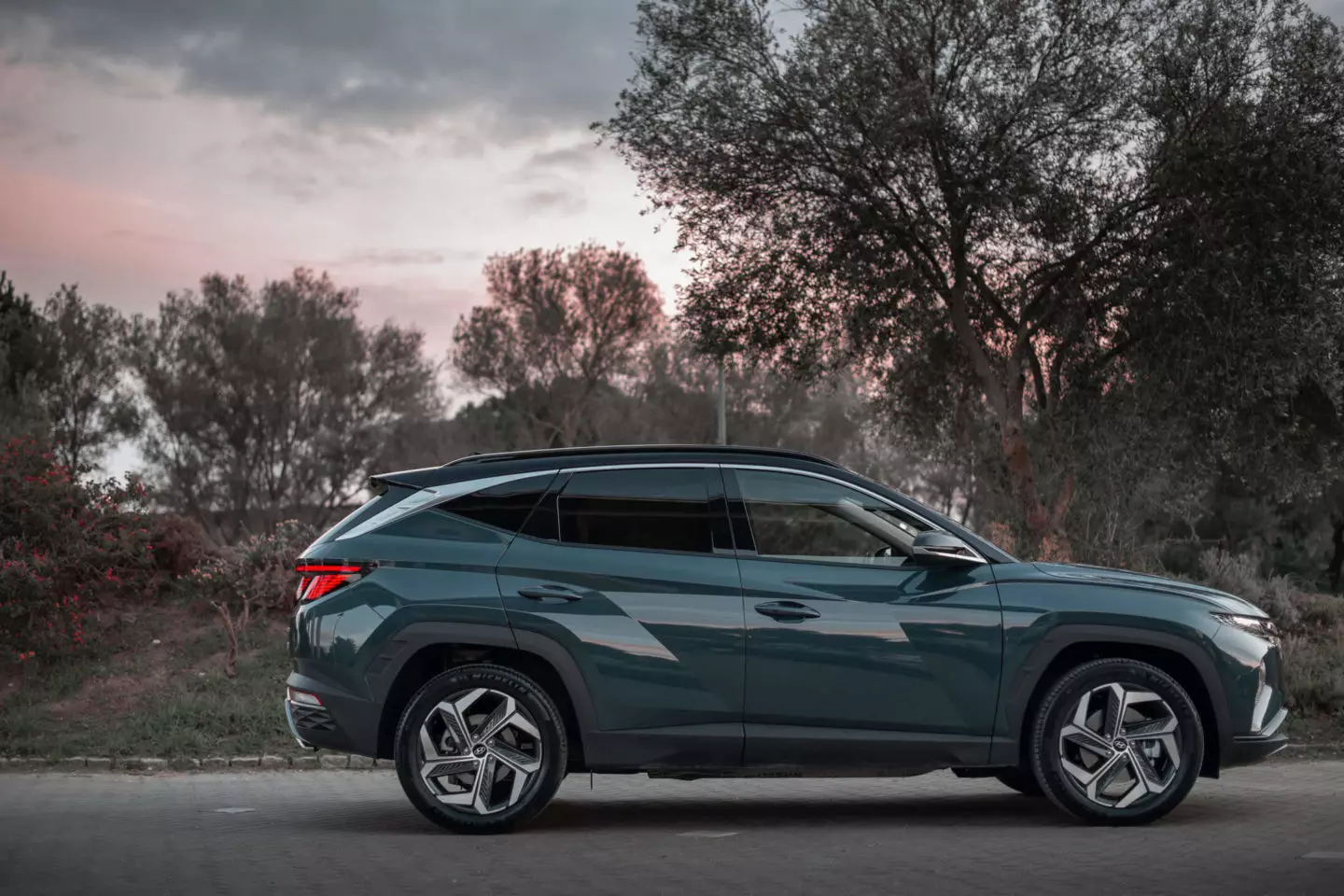
The side rivals the front in expressiveness, appearing to result from the overlapping of several volumes, as if it were composed of a series of broken surfaces.
Family par excellence
Abundant onboard space gives the new Hyundai Tucson a strong claim as a family vehicle. Furthermore, even with such an expressive exterior design, the occupants' visibility was not forgotten. Even rear passengers will have no difficulty seeing from the inside out, which considering some models today, is not always guaranteed.
The only regret is the absence of vents at the back, even though this is the top version of Tucson, the Vanguard — but we have two USB-C ports.
Subscribe to our newsletter
Fun fact: the new Hyundai Tucson Hybrid has the largest boot in the range, reaching 616 l. It must be a unique case on the market that the hybrid version has a larger luggage compartment than its more “simple” gasoline and diesel range brothers. Only possible because the battery is positioned under the rear seat and not the trunk.
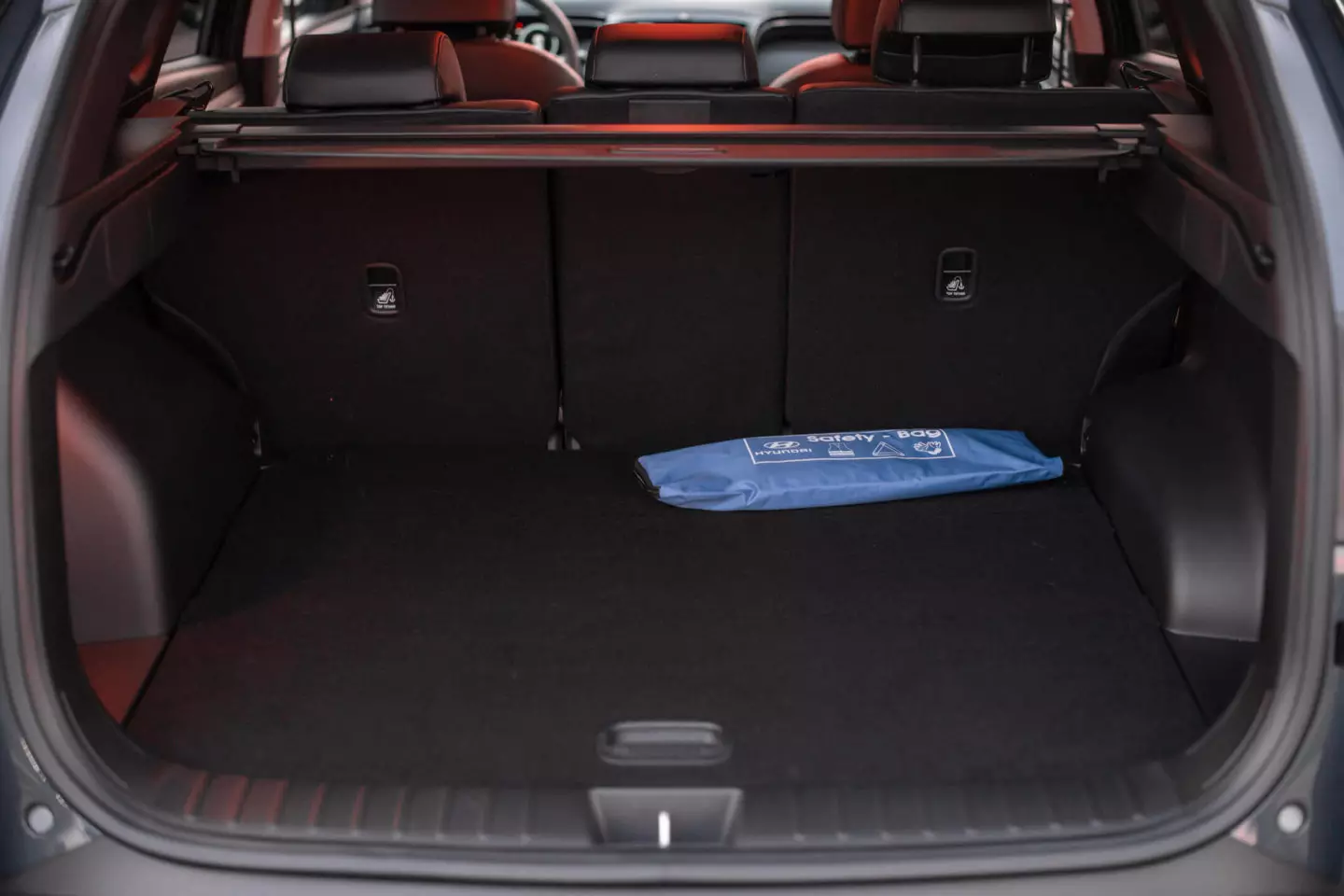
Capacity at the level of the best C-segment vans and level floor with the opening. Underneath the floor there is a divided compartment for storing smaller items and a dedicated space for placing the coat rack, which is of the retractable type — just don't go up together with the tailgate
The interior is not as visually expressive as the exterior, to be sure, but like this it cuts abruptly with the past. There is a greater prevalence of horizontal lines complemented by smooth transitions that guarantee a superior perception of elegance, and despite the presence of two generously sized digital screens, we are treated to a more welcoming atmosphere and even something “zen”.
What's more, at this Vanguard level, we're surrounded by materials, for the most part, pleasant to the eye and touch, with the skin predominating on the surfaces we touch the most. Everything is also solidly assembled, as Hyundai has got us used to, having no problem pointing out the new Tucson as one of the best proposals in the segment at this level.
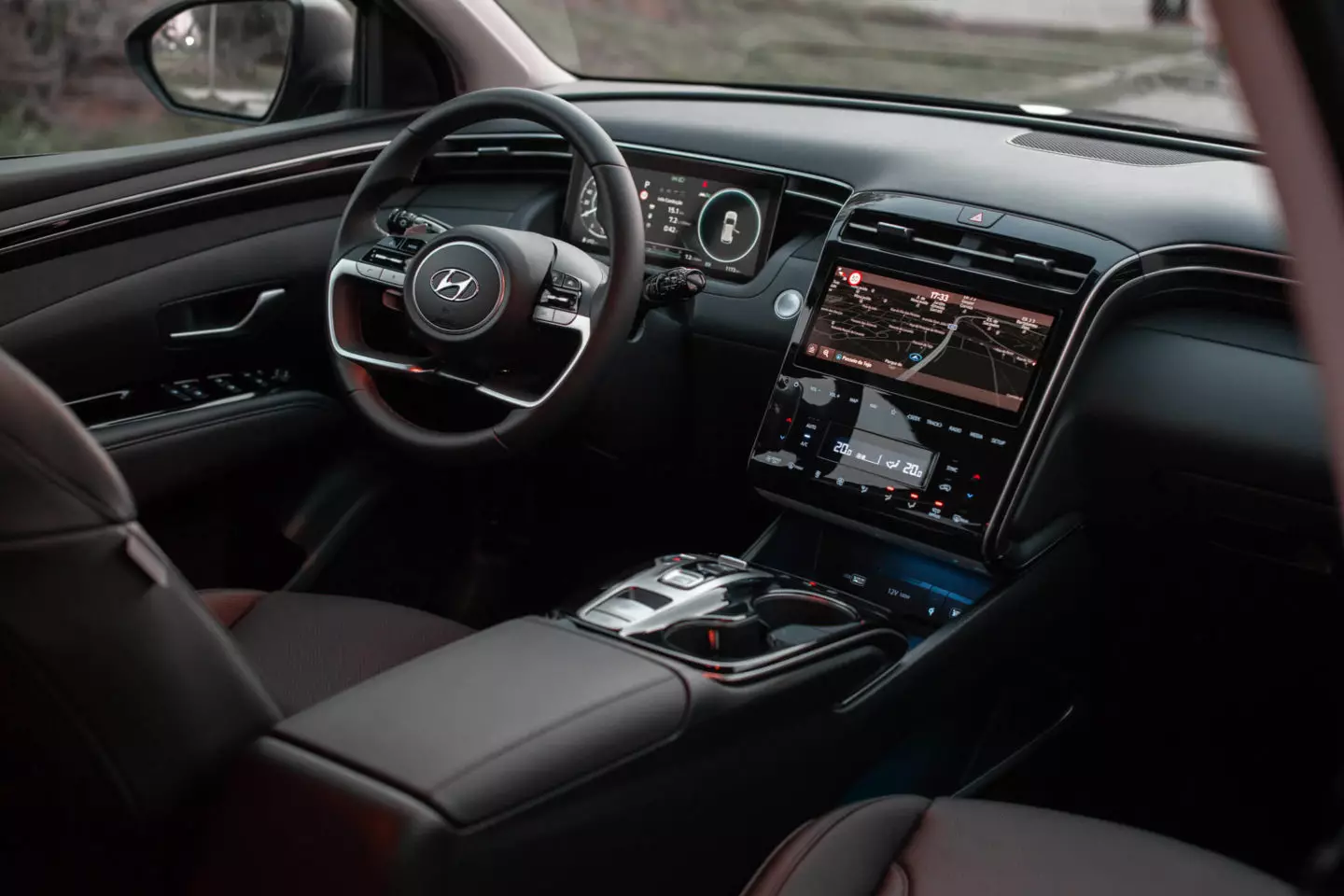
If the exterior is very expressive, the interior contrasts with calmer lines, but no less appealing. The center console highlights the sophistication and technology on board, even if it's not the most functional solution.
Even though it's well done inside, just one caveat for the tactile controls that fill the center console. They're embedded in a glossy black surface, contributing to a more refined and sophisticated look, but they leave something to be desired in their functionality — they force your eyes to take your eyes off the road longer and have no haptic response, but make a sound when pressed.
Electrify, electrify, electrify
The news in the new Hyundai Tucson continues in terms of engines: all engines for sale in Portugal are electrified. The “normal” petrol and diesel variants are associated with a mild-hybrid 48V system, while the Tucson Hybrid under test is an absolute first in the range, which will later be accompanied by a plug-in hybrid variant.
The Hybrid combines a 180hp 1.6 T-GDI petrol engine with a 60hp electric motor, ensuring a maximum combined power of 230hp (and 350Nm of torque). The transmission is only to the front wheels — there's a four-wheel-drive Hybrid in other markets — and it's via a six-speed automatic (torque converter) gearbox.
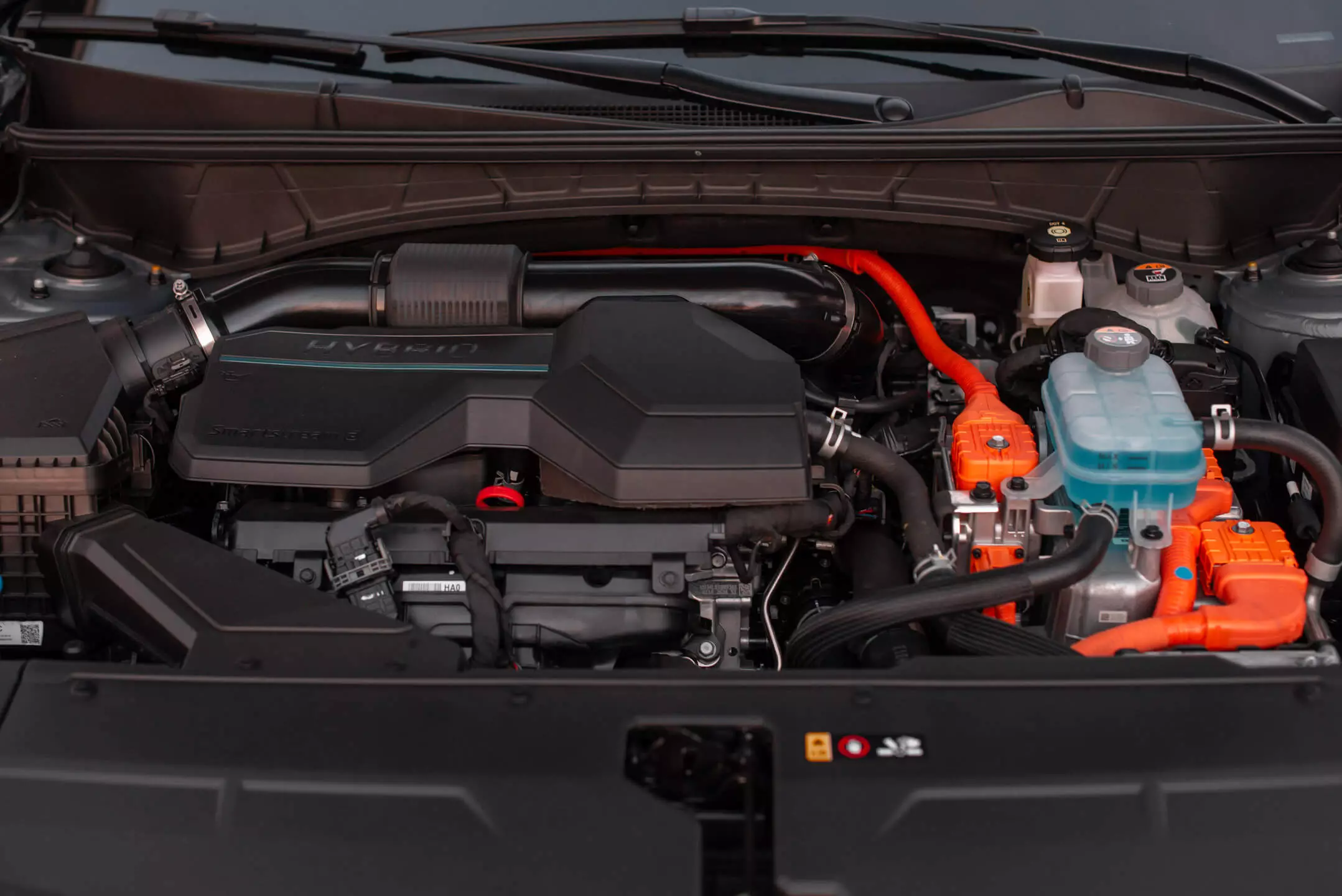
As a conventional hybrid it is not possible to plug the Hyundai Tucson Hybrid into the outlet to charge it; the battery charges by harnessing the energy captured in deceleration and braking. You don't need more, as it has only 1.49 kWh of capacity — 7-8 times smaller than most plug-in hybrids — so Hyundai didn't even bother to announce an electric autonomy (as a rule, in these hybrids , does not go beyond 2-3 km).
What justifies the absence of an exclusively electric mode of conduction, and truth be told, it's not needed at all. That's what we concluded when verifying the high frequency with which we circulate only and only with the electric motor, despite this only having 60 hp… but it also has 264 Nm “snapshots”.
Be gentle with the right pedal and are able to accelerate to speeds of 50-60 km/h in urban/suburban driving without waking up the combustion engine. Even at higher speeds and if conditions permit (battery charge, accelerator charge, etc.), it is possible, even on a 120 km/h motorway, for the electric motor to be the only one in operation, albeit by short distances — something I ended up proving in the field.
It must be economical...
Potentially… yes. I write potentially because the consumptions I got initially were high, more than I expected. It should be noted that this test unit had only a few kilometers and, together with the cold spell that was felt, they seem to have contributed to the abnormal results obtained, especially in the WLTP era in which we live, in which discrepancies are usually reduced between official and real values.
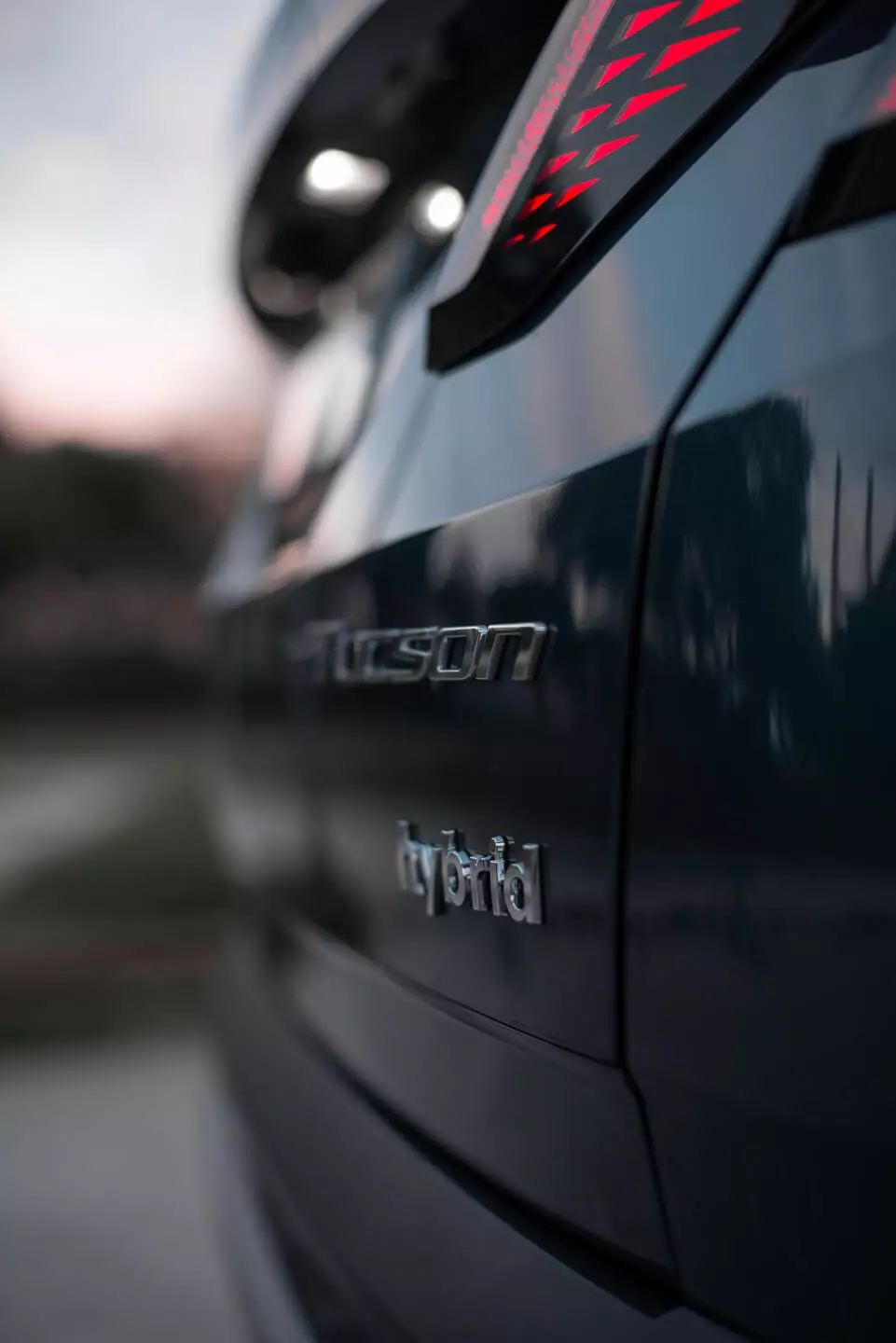
This unit seemed to be in need of a brave run. Said and (almost) done. For this, there is nothing better than a long stretch of road and highway to add miles to Tucson and take away the stubbornness. After hundreds of accumulated kilometers I saw a positive progress in the consumptions registered, but unfortunately the time of the Tucson Hybrid with me was almost up.
Even so, consumption between five liters high and six low in an urban environment could still be registered, and at stabilized and moderate speeds they settled slightly below 5.5 l/100 km. Not bad for 230 hp and nearly 1600 kg, and with more kilometers and testing time, there seemed to be even more scope for improvement — perhaps at the next opportunity. These last values are also in greater harmony with those we have registered with other hybrid SUVs in the segment, such as the Toyota RAV4 or the Honda CR-V.
Smooth in operation, but…
Leaving consumption aside, we are driving a vehicle with a complex kinematic chain that requires a harmonious understanding between the combustion engine, the electric motor and the automatic gearbox, and, broadly speaking, it is successful in this task. The new Hyundai Tucson Hybrid features a smooth and refined ride.
However, in Sport mode — in addition to this, in the Tucson Hybrid there is only one Eco mode —, the one most willing to explore the 230 hp we have more diligently, is the action of the box that ends up clashing, when we "attack" with more alacrity a more winding road. It tends to stay in a certain relationship or reduce unnecessarily when exiting the curves. It's not unique to this model; this modus operandi is often found in many other models from other brands with automatic transmissions.
It's preferable to run the box in Eco mode, where you always seem to know what to do, but I'd like to combine it with the Sport mode steering, which gets pleasantly heavier, but not much, relative to Eco.
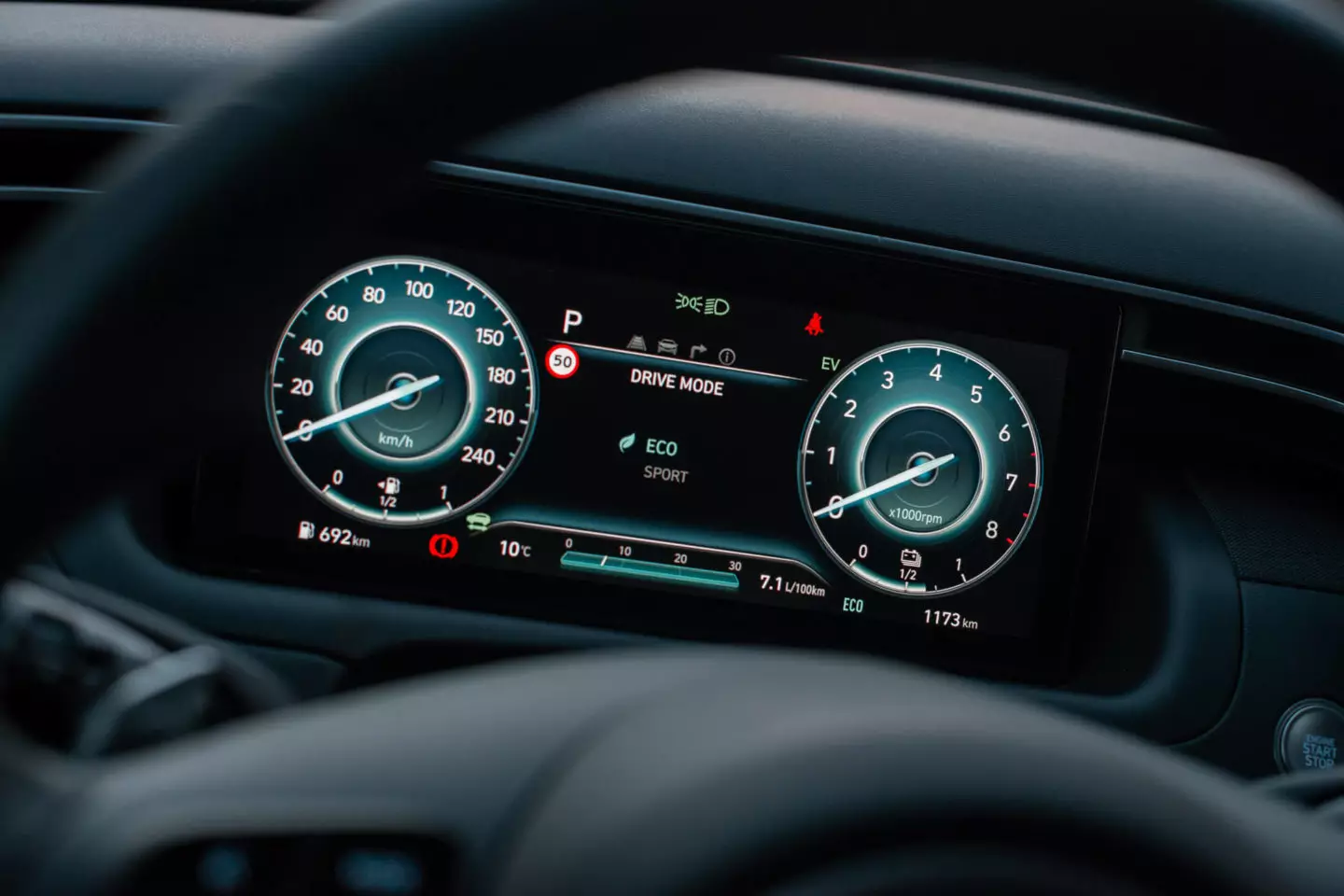
The panel is digital (10.25") and can take different styles according to the driving mode. In the image, the panel is in Eco mode.
More strait than sportsman
First, we have to realize that when we need the 230 hp, they all answer the call, revving the new Tucson vigorously when we hit the throttle with more thrust — performance is really on a pretty good plane.
But when we combine performance with the roughest road, we realize that the Hyundai Tucson values occupant comfort more than the desire to be the sharpest SUV in the segment — after all, it's an SUV for the family and for plus, for those looking for even more performance and dynamic sharpness, there will be a Tucson N later this year.
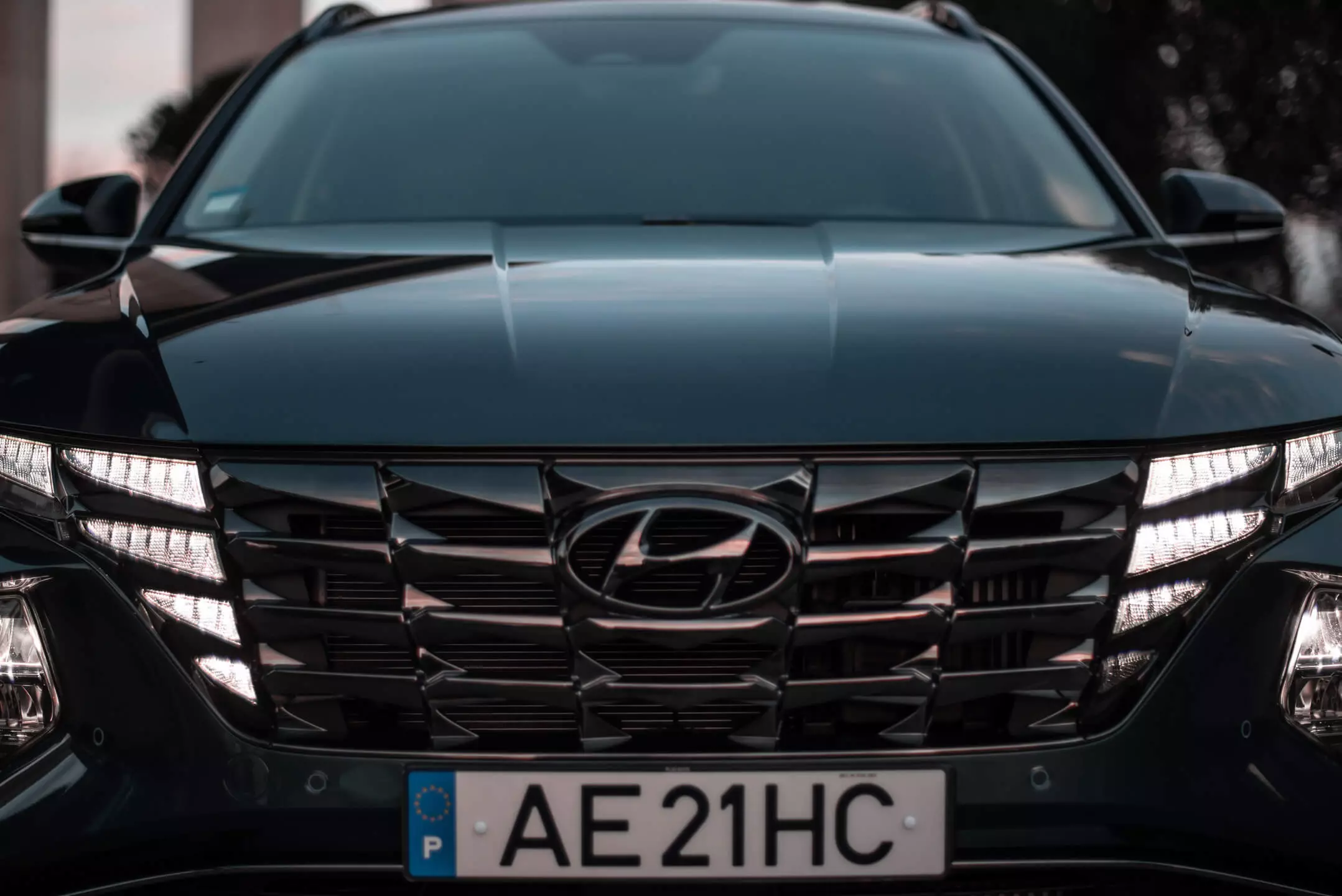
That said, the behavior is always healthy, progressive in reactions, effective and free from addiction, despite the bodywork moving a little more on these more hurried occasions. The strength of this Tucson are even the long shots on the open road.
It is on the main national roads and highways that the new Hyundai Tucson feels most at ease, exhibiting high stability and a very good ability to absorb most irregularities. Comfort is complemented by the seats that, even after prolonged periods of time, do not “crunch” the body and still provide reasonable support. Typically for an SUV, the driving position is higher than usual, but it's easy to find a good position with extensive adjustments to both the seat and steering wheel.
The only gap in his armor as a roadster lies in soundproofing, especially related to aerodynamics, where the noise of the air is heard much more than, for example, in a Volkswagen Tiguan.
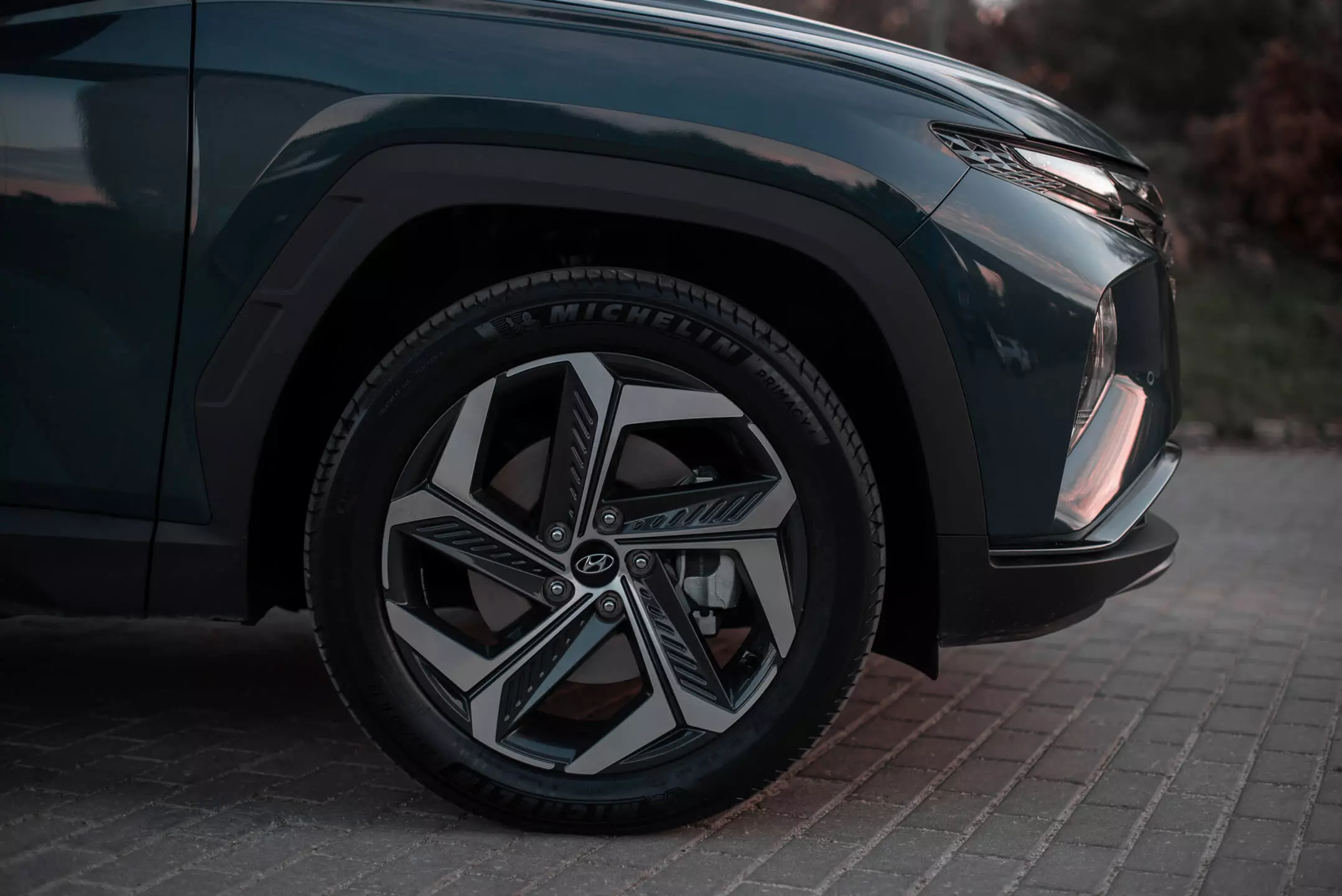
Is the car right for me?
The new Hyundai Tucson Hybrid reveals to be one of the most competent and competitive proposals in the segment.
I even had a brief contact with the Tucson 1.6 CRDi 7DCT (Diesel) and found it even more interesting to drive than the Hybrid, due to the greater perception of lightness, agility and sense of connection with the vehicle — even though the mechanical refinement is superior on Hybrid. But, objectively, the Hybrid “crushes” the Diesel.
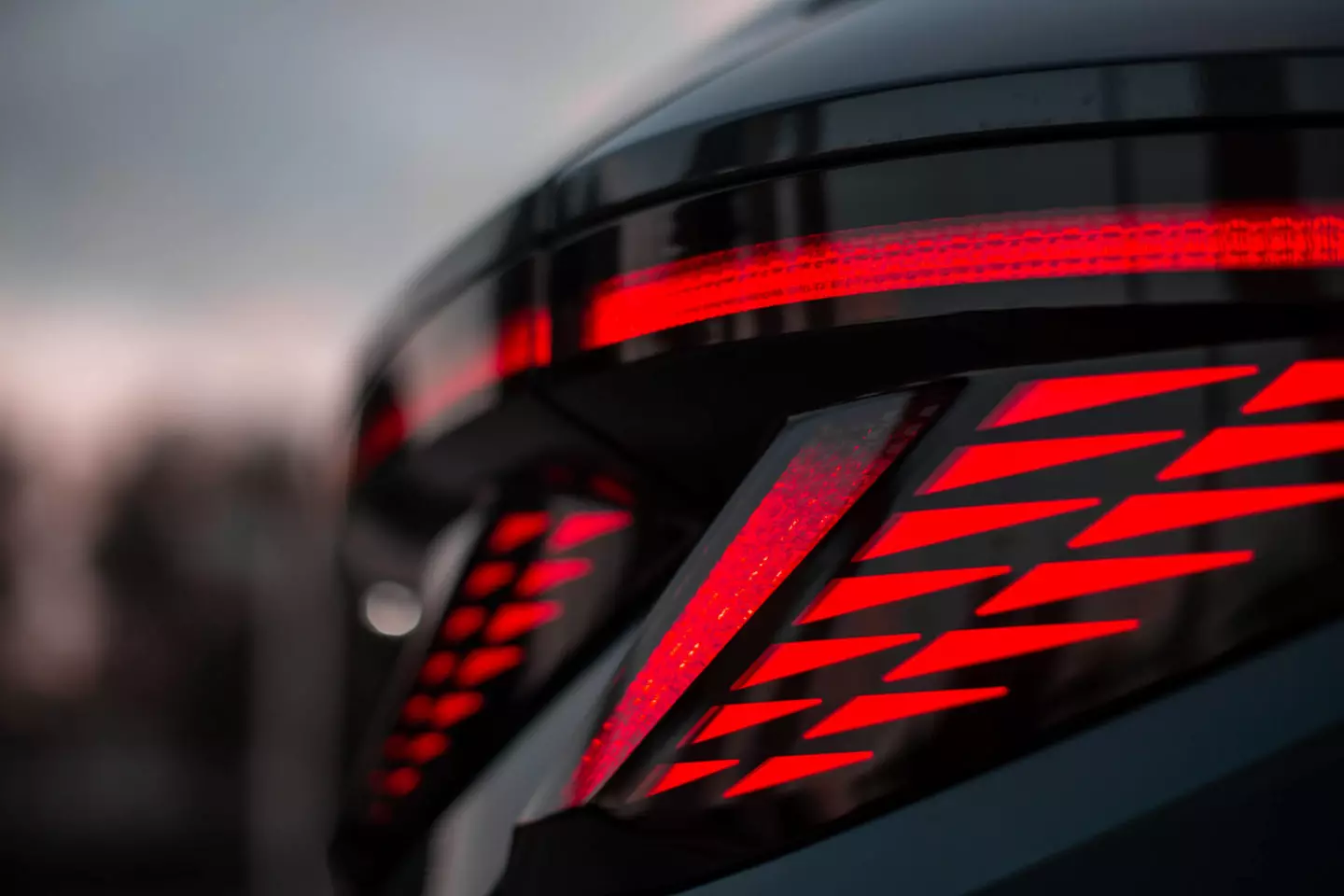
Not only does it offer performances of another level — it's always 94 hp more — but it's even a little… cheaper. In addition, the potential for reduced consumption is also great, more in urban driving, where the electric motor takes the lead. It's hard to look at any Tucson other than this one.
The competitiveness of this proposal does not fade when we place it alongside the Toyota RAV4 and Honda CR-V, its closest hybrid rivals, with the new Hyundai Tucson Hybrid being more affordable than these. Whether you like Tucson's bold style or not, it definitely deserves to get to know it better.
